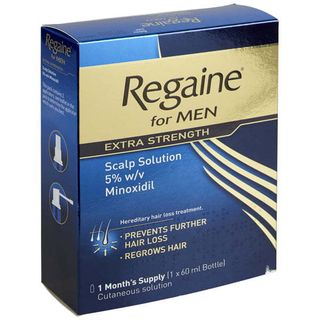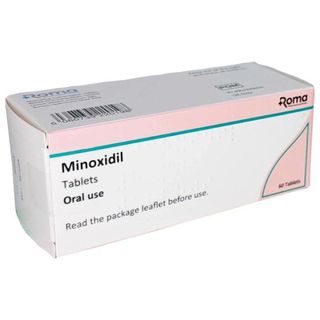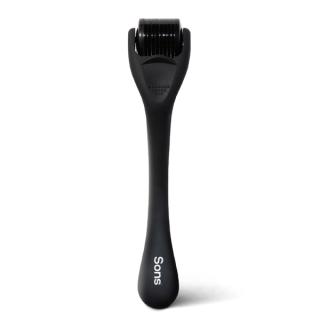
Hair Loss
Hair loss is very common, but this doesn’t make it any less upsetting if it happens to you. Both male and female pattern baldness are largely genetic. So, if one of your parents experienced hair loss, there’s a good chance you will too. There are also other types of hair loss, like alopecia, that can be caused by stress or illness.
You can minimise hair loss by using a mild shampoo, avoiding dye and blow dries and eating a healthy, balanced diet. Let’s explore the best options for you.
Hair Loss Treatments
- Best seller
 Finasteride 1mg Tablets For Hair Loss£13.89
Finasteride 1mg Tablets For Hair Loss£13.89 
Avodart (Dutasteride)
Avodart (Dutasteride) 0.5mg Capsules£42.99
Dutasteride 0.5mg Capsules
Dutasteride 0.5mg Capsules£22.79
Regaine
Regaine For Men: Extra Strength Solution£29.99
Propecia 1mg Tablets
Propecia 1mg Tablets£51.99
Alpecin Caffeine Shampoo
Alpecin Caffeine Shampoo£6.49
Oral Hair Loss Treatment
Oral Hair Loss Treatment£44.99
Alpecin Double Effect
Alpecin Double Effect Shampoo£7.89
Sons Minoxidil 5% Spray
Sons Minoxidil 5% Spray£28.99
Sons Strengthening Shampoo 200ml
Sons Strengthening Shampoo 200ml£12.99
Sons Biotin Capsules
Sons Biotin Capsules£9.99
Sons Hair Growth Complex Capsules
Sons Hair Growth Complex Capsules£29.99
Sons Thickening Hair Clay 75ml
Sons Thickening Hair Clay 75ml£12.99
Buy Sons Derma Roller
Buy Sons Derma Roller£14.99
Sons Strengthening Conditioner 200ml
Sons Strengthening Conditioner 200ml£12.99- Out Of Stock

Regaine For Women
Regaine For Women£21.99
Start your assessment for Hair Loss
Don't wait to get the medical help you need.
Once you complete a short online assessment about your condition, you will be able to select your preferred treatment and quantity from a list of appropriate options for you.
- Reviewed by our UK-based medical team
- Takes less than 3 minutes to complete
- Approved treatments dispatched same day (before 3pm)
Ordering as easy as 1, 2, 3
1. Find the ideal treatment
2. Get a free consultation
3. Enjoy speedy delivery
Advice for Hair Loss
What types of Hair Loss are there?
Hair loss is a common condition that affects both men and women. Treatment can be effective in slowing the rate of hair loss. Buy hair loss treatment from The Independent Pharmacy following an online consultation for fast and effective medication that’s delivered straight to your door. Get in-depth medical advice and discreet packaging, whatever treatment you are after.
Hair loss is simply the partial or complete absence of hair from areas on the body where it normally grows. This condition is medically known as alopecia and can also be referred to as baldness. Alopecia can affect both men and women of all ages. There are many different types of alopecia with many different causes and symptoms.
The most common cause is male-pattern baldness (androgenic alopecia). This type of baldness is hereditary and will affect around 50% of all men by the age of 50. Male-pattern baldness is characterised as a receding hairline accompanied by thinning of the hair on the temples and crown.
Male-pattern baldness is caused by sensitivity of the hair follicles to the hormone testosterone. With exposure to testosterone the hair follicles eventually shrink and stop functioning. Male-pattern baldness is normally genetic and is not a sign of disease or ill health. Hair loss in men can be effectively treated, with a number of treatment options available including medicinal and surgical options.
Female-pattern baldness is much less common and is usually characterised by the thinning of hair on top of the head. Female-pattern baldness generally has less treatment options than male-pattern baldness, although it can still be effectively treated.
Other types include:
- Alopecia areata: This can occur at any age but is far more prevalent amongst teenagers and young adults. It is estimated that six out of every ten people affected will experience their first bout of alopecia areata before they reach the age of twenty. Alopecia areata will present as patches of baldness that can come and go. It is thought to be caused by a problem with the immune system.
- Scarring alopecia: This can also be referred to as cicatricial alopecia. Scarring Alopecia is usually the result of another condition, such as lichen planus or discoid lupus. Scarring alopecia involves the hair follicle being completely destroyed meaning the hair will not grow back
- Anagen effluvium: This can affect the whole body. It is most commonly caused by chemotherapy.
The Independent Pharmacy cannot treat these additional types of hair loss; they require specialist treatment.
What are the symptoms?
Most common forms:
Male-pattern baldness (androgenic alopecia):
Male-pattern baldness causes significant hair loss in up to 6.5 million men in the UK. It can start as early as the teenage years and occurs by the age of 40 in a significant proportion of men. This can cause significant emotional distress in some men, leading to a lack of self-esteem and even depression. Emotional distress is often more pronounced in younger men.
This will usually follow a pattern. It generally starts with a receding hairline as well as thinning of the hair on the temples and crown. It is uncommon for this type of hair loss to result in complete baldness. This form of hair loss usually occurs around the late twenties or early thirties and is normally a very slow process. By a man’s late thirties it is very common for him to have suffered some degree of hair loss.
Female-pattern baldness:
This is less common and differs from male-pattern baldness. The hair generally only thins on top of the head. Female-pattern baldness is usually more prominent after the menopause.
Less common forms:
Alopecia areata:
This is a form of hair loss that will present as patches of baldness. These patches will usually be about the size of a large coin. Alopecia areata can occur anywhere on the body, though it‘s more common to appear on the scalp. Approximately one in every ten sufferers of alopecia areata will also suffers symptoms in the fingernails, causing them to become grooved or pitted.
Scarring alopecia:
The symptoms of scarring alopecia will relate to the underlying condition that is causing it. For example, if lichen planus has caused the hair loss then the affected skin will likely be damaged too. This sets scarring alopecia apart from other forms of hair loss, as it also affects the skin where the hair has fallen out. Unfortunately, the damaged skin can cause the hair follicle to become damaged or destroyed. This means the hair is unable to grow back.
Anagen effluvium:
This is most commonly caused by the cancer treatment, chemotherapy. This form of alopecia is only temporary and the hair should start to grow back within a few months of completing the chemotherapy. The loss suffered from anagen effluvium is widespread and can affect the body and face as well as the scalp.
How is Hair Loss diagnosed?
Most cases of male hair loss (androgenic alopecia) can be self-diagnosed without the need to consult a doctor. It is likely someone in your family (your father, grandfather, or uncle) will have suffered with the same condition and your hair loss will follow a similar pattern. Most male-pattern baldness becomes apparent over a number of years so it may initially be difficult to notice until it becomes more pronounced. If treatment is desired, the earlier it can be started, the more effective it is likely to be.
If you are concerned, your GP should be able to perform a diagnosis by simple examining your hair and scalp. This examination will help them identify which form of hair loss you are suffering with and offer the necessary advice.
How can Hair Loss be treated?
Hair loss, such as male-pattern baldness, is usually only treated for cosmetic reasons. The medicines used to effectively treat male-pattern baldness are Finasteride (Propecia) and Minoxidil (Regaine). Neither treatment is available on the NHS and will have to be purchased privately. It is important to start hair loss treatment as soon as possible after you start experiencing male pattern baldness. It is much easier and more effective to keep existing hair rather than grow it back. Female-pattern baldness is also treated using Minoxidil (Regaine for Women) which is similar to the male version although it is a lower strength.
Finasteride
Finasteride is used to treat hair loss and is known as the branded treatment, Propecia. Propecia comes in a 1mg tablet form and requires one to be taken each day. In the body, the conversion of testosterone to dihydrotestosterone causes the hair follicles to shrink. Propecia blocks this conversion, thus allowing the hair follicles to return to their normal size. Propecia is actually thought to increase the amount of hairs people have, improving its overall look. Treatment will usually be required for six months to reverse the balding process and treatment is then continued long-term. If treatment is halted, then hair loss will likely resume within a six to twelve month period. Generic Finasteride or Propecia 1mg is available to buy online from The Independent Pharmacy.
Minoxidil
Minoxidil can be bought over-the-counter without the need for a prescription. It is available as a topical foam or lotion that is rubbed into the scalp every day. It isn’t exactly clear how minoxidil works but it has been shown to encourage regrowth and thickening of the hair. Like Finasteride, Minoxidil will need to be used for several months before the results are visible. If treatment is stopped then the balding process will usually resume within a few months. Examples of hair loss treatments containing Minoxidil include:
- Regaine for Men Extra Strength Foam (1 & 3 month packs) - contains Minoxidil 5%
- Regaine for Men Extra Strength Scalp Solution (1 & 3 month packs) - contains Minoxidil 5%
- Regaine for Women Regular Strength (1 month pack) - contains Minoxidil 2%
Other available treatments available for hair loss include wigs and surgical hair transplants.
How can I prevent Hair Loss?
Preventing hair loss can sometimes be out of your control. Genetic factors can mean it is programmed into your genes to lose your hair. The best approach to adopt is to start treatment early and take good care of your hair and scalp by:
- Not subjecting it to constant or extreme heating or drying procedures.
- Reducing the amount of dyeing your hair undergoes. Try using a semi-colour no more than every 6-8 weeks.
- Being careful about over-styling and the products you use. Some styles require the hair to be pulled tightly with clasps, clips and elastics. This can cause hair loss if done on a daily basis.
- Washing your hair regularly using a mild shampoo and avoid brushing when the hair is wet.
- Avoiding rubbing vigorously with a towel when drying. Instead, gently pat dry.
- Brush the hair using a soft bristled comb or brush.
- Eating a nutritious, balanced diet. A healthy body is more likely to have healthy, stronger hair.
- Avoiding stress where possible.
- Getting plenty of sleep and exercise.
- Considering stimulating the scalp with a weekly scalp massage.
Alternatives
Alternative Non-Medicinal Therapies for Hair Loss
There are a number of alternate therapies that exist to treat hair loss, some of these include homeopathy, acupuncture and aromatherapy. However, there is not much evidence that these therapies are effective, as well as there being no clinical evidence to suggest that herbal remedies have any positive effect on hair loss.
Another alternative you may wish to try is something as simple as trying wigs or hair pieces. These vary in price depending on whether you choose to have synthetic hair or real hair.
Another option is a hair transplant, these have become increasingly popular in the last few years, how ever they're very expensive and the success rates can vary.
FAQs for Hair Loss
Will I lose my Hair?
Two out of every three men in the UK will experience male pattern baldness to some extent. Family history can be a strong indicator of your chances of losing your hair. Hair loss tends to be linked to the mother’s side of the family, so you are most likely to lose your hair at a similar age to your maternal grandfather.
Race is also a factor: for example, Caucasian and Afro-Caribbean men have a much higher rate of male pattern baldness than do East Asian men.
How can I tell whether I am losing my Hair?
Some men are excessively paranoid about hair loss. Others may be in denial, and so do not accept their own hair loss for several years. Either, it can be difficult to objectively identify hair loss, especially because baldness tends to occur very slowly.
Generally, though, you or someone else will notice that your hairline has gradually receded or that your hair has thinned. You may also notice that hair is coming out in the shower or on your pillow.
How can I tell if I have Male Pattern Baldness?
Male pattern baldness is characterised by a loss of hair on the top of the head. It does not affect the back or sides of the hair. The pattern of hair loss can occur starting at the crown, the hairline, or both.
Is there a cure for Male Pattern Baldness?
No, there is no cure. Other causes of hair loss may, however, be reversible.
Can Baldness be prevented?
Male pattern baldness cannot be prevented, though there are treatments and techniques which may delay baldness or suppress the symptoms.
Do women experience Pattern Baldness?
Women tend to lose hair when they are especially sensitive to DHT in the scalp. This most often happens during and following the menopause, due to the decrease in female hormones and relative increase of male hormones such as DHT. This hair loss does not occur in the same pattern as it does for men, and is rarely as severe. Changes in hormones that lead to hair loss could be caused by thyroid disorders and should be checked by a medical professional. This can also cause weight gain.
Pregnant women, who have increased levels of progesterone, may experience some hair loss. The progesterone causes hair follicles to briefly stop. Again, this is only temporary.
Women with a deficiency of iron called anaemia can suffer from hair loss. This can be reversed with a diet with sufficient iron.
What is Minoxidil?
Minoxidil is the only lotion that is approved in the UK to treat hair loss. Its trade name is Regaine. It tends to take up to four months to take effect. Start by using the weaker 2% lotion – only move on to the stronger 5% lotion if you do not notice any improvement after three months. For about one-third of men, Regaine will be ineffective. Only one-third of Regaine users will see a full regrowth of hair on bald patches. The remaining third will have some regrowth, but it will be finer and thinner than their natural hair.
Even for men who do not see regrowth after using Regaine, they will likely notice that further hair loss has stopped. However, baldness will continue if you stop using the lotion.
Regaine must be purchased from a pharmacy when a licensed pharmacist is present but does not require a prescription. A month’s supply of Regaine usually costs about £30 – be careful not to pay significantly more over the internet for Regaine or an equivalent. A pharmacist will ensure that you can safely take Minoxidil. It may be unsuitable if your blood pressure is high.
What is Finasteride?
Finasteride tablets prevent hair loss by inhibiting 5-alpha-reductase, the enzyme involved in converting testosterone to DHT (discussed below).
You can get a private prescription for Finasteride from your GP or dermatologist – it is not available on the NHS. Finasteride was formerly sold as Propecia or Proscar. These patents expired in recent years, meaning that the tablets have decreased in cost.
2% of Finasteride users experience side effects including impotence, reduced libido and reduced semen production. These will tend to go away once you stop taking the tablets.
Finasteride and Regaine have shown to have similar rates of effectiveness, though there is no definitive comparative study of the two treatments. Within six months of stopping either treatment, symptoms of male pattern baldness will resume.
What other treatment options are available?
The action of DHT can be directly blocked through anti-androgen therapy. This is a hormone therapy regime you should only pursue under the advice of an endocrinologist or an appropriately experienced dermatologist.
Hair replacement surgery is a more drastic solution which involves reconstructing the skin on the scalp such that bald patches are minimised and areas with hair are made more prominent. This is done by grafting skin from the back of the head, where hair still grows, to the top of the scalp. Grafts can be made to look natural by moving very small plugs of skin – usually less than five hairs at a time. A surgeon will likely construct a new hairline using individual hairs (micrografts) at the front and plugs of 3-6 hairs (mini-grafts) for the subsequent rows of hair.
This is a complex surgery. Even with a skilled surgeon, hair loss may continue around the grafts, leading to a very patchy appearance. The procedure can be very expensive, especially if further work is required in the future. Consult your GP thoroughly and be sure to select a reputable surgeon.
Will I go completely Bald without treatment?
It is difficult to predict the extent to which male pattern baldness will cause hair loss. Generally, though, men who experience hair loss earlier in life will be most likely become fully bald. If you do not notice symptoms of pattern baldness until after your mid-twenties, you will likely still have hair, albeit thinner hair, when you reach old age.
It may be worth finding out the extent to which male pattern baldness has affected older men in your family, especially your maternal grandfather. Comparing their history to your own experiences may give you an indication of your eventual hair loss.
At what point should I seek treatment?
It is easier to reverse symptoms of male pattern baldness the earlier that treatment is started. So, if you wish to stop the process of going bald, you should consult a specialist as soon as you notice significant hair loss.
If you do not pursue treatment, the process of hair loss will continue, and it will become more difficult to minimise or hide the symptoms.
How can I minimise my Hair Loss?
Outside of medical treatments, there are some changes to lifestyle and hair care that may mitigate male pattern baldness.
In terms of your hair care routine:
- Be gentle with your remaining hair – use a comb rather than a brush
- Consider switching to shampoos and other products that can make hair look fuller
- Do not wear tightly fitting headwear
- Consider cutting your hair short, so that any balding areas are less noticeable
There is also a link between diet and hair loss. Ensure that you have sufficient iron and protein each day.
What is DHT?
Dihydrotestosterone, or DHT, is a hormone that is present in men’s hair follicles in the scalp. It shortens the lifespan of hair follicles, leading to hair loss. Without DHT, most hair follicles can grow hair for nearly eight years.
Some women experience hair loss during the menopause, due to the decrease in female hormones and relative increase of DHT.
Finasteride blocks the conversion of testosterone to DHT; anti-androgen therapy blocks DHT activity directly.
At what age does Hair Loss start?
Men tend to first notice male pattern baldness from the age of 25 to 35, though it can sometimes start as early as a man’s late teenage years. Baldness tends to accelerate with age.
Are hair loss treatments effective?
There are a number of different treatments available to combat the signs and symptoms of hair loss, mostly depending on the reason for the loss. Whether the treatment is effective or not usually depends on the type of medication you are taking and the cause of the hair loss.
Finasteride is an effective treatment for male pattern baldness and works to slow down hair loss. It is effective in around 90% of men who suffer from this condition.
Which vitamins are good to combat hair loss?
If using the usual type of medication is not working, or you would rather take a holistic approach, then you should consider taking vitamin supplements to promote strong and healthy hair. There is no scientific research to show that these vitamins are effective in treating hair loss, so it is recommended that this method is used in conjunction with taking medication.
There are lots of different vitamins that are known to promote strong and healthy hair. Vitamins like:
- Biotin
- Niacin (Vitamin B3)
- Vitamin C
- Zinc
- Iron
Other natural remedies include consuming omega 3, an essential fatty acid that our body needs to function properly.
Why does hair loss occur at a young age?
Hair loss can occur at any age. Those that are affected by this condition from a very young age may notice loss from their teens or early twenties. This is known as Androgenic alopecia and is usually passed down through genetics. Those that are affected with Androgenic alopecia will have a family member who is also affected by this condition.
People with this condition usually notice a receding hairline that gradually spreads to the rest of the head.
A condition called Alopecia areata can also cause young people to lose their hair. This condition usually starts suddenly and leaves patches on the affected person's scalp. Those that are affected should expect their hair to grow back within a few years.
When is hair loss normal and no cause for concern?
Everyone loses hair, but it’s difficult to gauge when this loss is cause for concern. If you are concerned about the amount of hair you are losing then it is important to monitor this condition and speak to a doctor. They will be able to decipher if this is normal or cause for concern.